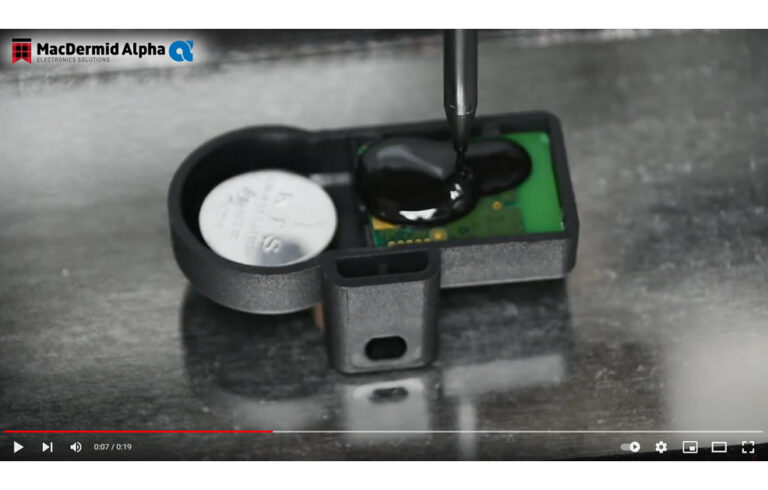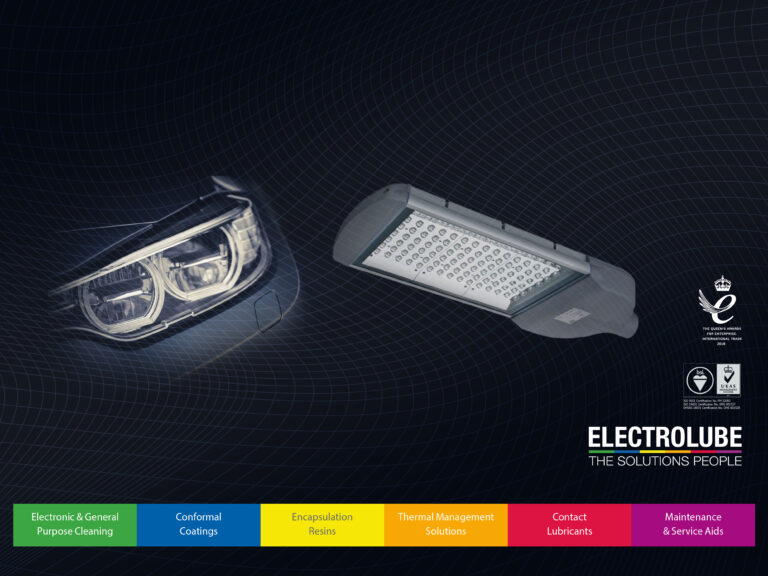Electrolube’s Jade Bridges returns to the subject of thermal management, reminding us why it plays such an important role in circuit and electronic assembly design, and asks when it is appropriate to use a silicone thermal compound and when not. She also hints at future directions for circuit thermal management technology.
In my previous column I highlighted a few cautionary notes on the ‘pain points’ associated with thermal management products, particularly the choices that you will be confronted with, such as which material or product type – i.e. pad or paste – is best suited to your application. In this column, I intend to underline the importance of getting it right, and touch on the consequences if you don’t.
There are a variety of materials and methods to choose from, and they serve different purposes depending upon the physical constraints of the application, component layout and assembly geometry, the environment in which the assembly will be placed, the severity of duty, and so on. Then there are some more specific questions to ask, such as: what thermal conductivity do I require, or how much material will be needed in the interface between component and heat sink to achieve a thermally stable assembly?
Overlook the slightest detail and you could compromise the performance of your electronic assembly. Clearly, poor thermal management practice will affect the efficiency of dissipating heat away from components and safely out of the assembly. As the temperature of a component increases and reaches its equilibrium temperature, the rate of heat loss per second will equate to the heat produced per second within the component. This temperature may be high enough to significantly shorten the life of the component or even cause the device to fail, unless adequate thermal management measures are taken.
Of course, the same applies to a complete circuit or device, which has individual heat producing components within it. In this case, inadequately thermally managed components will almost certainly overheat, which will negatively impact on the surrounding components and lead to reduced life expectancy for those components or even their complete failure in service.
Poor reliability arising from thermally induced circuit failures might prove detrimental to brand reputation, but what if the application served a ‘critical’ role? Such applications might include a safety critical device upon which the safety of personnel working in a hazardous environment might depend; one that simply would not function without proper thermal management procedures in place; a device that has a defined working temperature range when in use, or a piece of equipment designed to work in harsh or extreme conditions, which must work reliably, regardless of those conditions.
Silicone or non-silicone?
Traditionally, silicones have always provided the higher temperature option, offering greater stability at temperatures in excess of 150°C compared with other chemistries. However, recent advances have seen the gap between the thermal performance of silicone and some non-silicone materials narrow slightly, with new non-silicone market entrants now offering excellent stability at temperatures up to 180°C.
As well as providing excellent high temperature performance, silicones offer very good environmental stability, particularly where electronic devices are operated in areas of high humidity. Their very low viscosity ensures fast flow and thorough coverage during application, and also makes them an excellent choice for application via screen/stencil printing.
Whilst possessing some clear thermal advantages over non-silicone technologies, silicones do have some negative issues, one of which is a phenomenon called ‘migration’. This occurs when volatile low molecular weight siloxanes are released from the silicone, causing problems in the surrounding environment. Where electronics are concerned, migration results in the formation of silicon carbide on PCB surfaces, leading to failures.
In the wider production environment deposits of low molecular weight siloxanes on surfaces in other parts of the factory can also lead to problems with the adhesion of surface finishes – particularly paint, the quality of which may be compromised. Such siloxanes can also find their way around factories through ventilation and extraction systems, causing even wider spread problems and in some incidences a total ban on silicone containing materials may be in place at certain production plants.
There is increasing demand for non-silicone products and one contributing factor is the global shortage of silicone, which is forcing suppliers to pass on price increases to customers. Indeed, some manufacturers of silicone based thermal management products are warning about hefty price increases of up to 25%.
It is perhaps the escalating growth of the global LED market that is fuelling the move towards non-silicone solutions as the long-term reliability of silicones in LED applications is now in question*. Non-silicone thermal management solutions now deliver a high performance alternative to silicone materials and provide manufacturers such as those involved in the LED lighting industry with an immediate drop-in solution.
The ‘new kids’ on the block
Thermal pastes are at the forefront of thermal management applications and are expected to remain so for some years to come. They are easy to apply and rework whilst providing a cost effective alternative to thermally conductive bonding products such as RTVs and two component epoxies, for example.
Thermal pastes have offered some of the lowest thermal resistance values available in the market for thermal interface applications but in recent years a new rival to this material technology has appeared on the scene – phase change materials. Like pastes, phase change materials can also be applied very thinly, therefore offering exceptionally low thermal resistance. With phase change technology, a key benefit is the greatly reduced effects of pump out – making phase change materials an excellent choice for applications that undergo widely varying temperatures.
With thermal management playing more and more of a crucial role in electronics, it is likely that the stability of these new phase change materials will see them take an overwhelming lead in thermal management technology – and, as this technology rapidly develops, this will take effect sooner rather than later.
*More information about the use of silicones in LED applications can be found here.











